What is an eye examination?
An eye examination consists of a series of tests performed by a licensed eye care professional (for example an ophthalmologist or optometrist) to check your child’s eye health.
The vision care team
According to the Canadian Ophthalmological Society your vision care team includes ophthalmologists, optometrists and opticians.
Ophthalmologists
Ophthalmologists are highly-trained eye doctors and surgeons, the medical leaders in the eye care team. They are licensed medical specialists in eye and vision care, surgery and medical interventions, and in diagnosing, treating and preventing serious eye disease. Ophthalmologists perform comprehensive eye exams, conduct surgery, prescribe and give medication and determine the ideal prescription for corrective lenses.
Ophthalmologists are physicians who, when they graduate from medical school, do several years of post-graduate training in diagnosing and treating diseases of the eye.
Optometrists
Optometrists are primary health-care providers who specialize in examining, diagnosing, treating, managing and preventing disease and disorders of the visual system and the eye and associated structures. They also diagnose ocular manifestations of systemic conditions.
A four-year doctor of optometry degree program follows a university degree.
Opticians
Registered opticians are specially trained to design, fit and dispense eyeglasses, contact lenses, low vision aids and prosthetic ocular devices. They interpret written prescriptions from ophthalmologists (medical doctors) and optometrists (non-medical eye care professionals) to determine the specifications of ophthalmic appliances necessary to correct a person’s eyesight.
Eye examinations
Ophthalmologists and optometrists are both professionals that are licensed to perform eye examinations. The Canadian Paediatric Society recommends vision screening by your child’s primary health-care provider at all infant and well-child visits. If there are any risk factors (for example prematurity, certain genetic syndromes) or vision complaints, they should be seen by a licensed eye care professional. Keep in mind that the sooner a condition is discovered, the sooner treatment can be started.
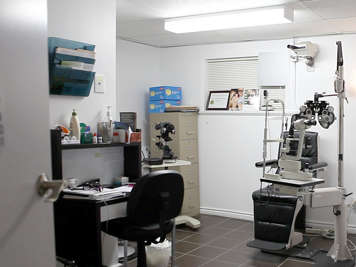
Signs that your child needs to see a licensed eye care professional
There are a number of signs that parents should look for that may indicate their child is having a visual problem. Here are a few examples.
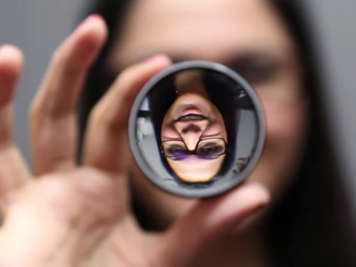
- If, when you look at your child, you notice that one eye is not aligned.
- Your child has trouble focusing or squints a lot.
- Your child holds books too close or loses their place when reading.
- Your child turns or tilts their head when they want to look at something.
- Your child covers an eye when stepping into sunlight.
- One of your child's eyes is whiter and brighter than the other eye in a picture taken head on.
- Your child moves to the front of the classroom to see the blackboard better.
Your child may not complain about not seeing correctly because they are unaware there is a problem. Only you, as a parent, can make sure that any visual problem your child may have is caught early on.
Eye examinations for children aged two and over
A licensed eye care professional often uses toys to get a child’s attention or may involve the parents. It also helps if one of the parents has an eye examination while the child watches. To lessen your child’s anxiety, explain what is going to happen in a simple way they can understand.
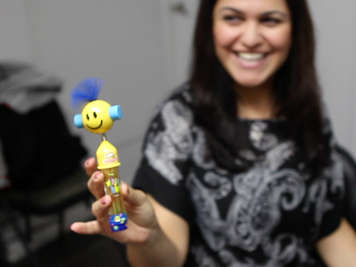
What tests are performed during an eye examination?
A licensed eye care professional will first review your child’s history and will ask about any health issues or conditions that may affect your child’s eye health. The will then ask parents questions such as:
- Have you noticed any visual problems, such as squinting, tilting/turning their head or holding books too close?
- Was your baby premature? Did anything happen during the birth of your baby? Was it a difficult delivery? Was the baby hurt during the delivery?
- What is your child's development like?
- Is there any history of eye turn or lazy eye in the family?
Remember to bring to your appointment any documents that can help you answer these types of questions. Your child will then have a series of tests to check their vision. None of them are uncomfortable, painful, invasive or risky. They include (but are not limited to) the following tests.
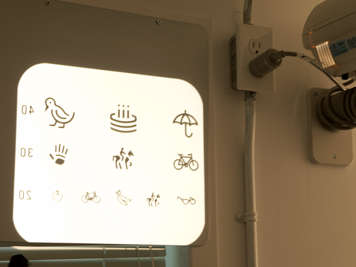
Visual acuity
Visual acuity is how clearly and sharply your child can see objects that are far away and close up. Your child will cover one eye and read the letters or pictures projected on a wall or on a chart. They will then cover the other eye and do the same. This tests vision at a distance.
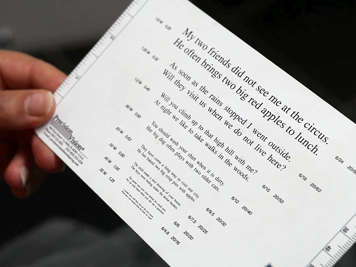
To test your child’s near vision, your child will be asked to read lines of text or pictures that become smaller and smaller on a hand-held chart.
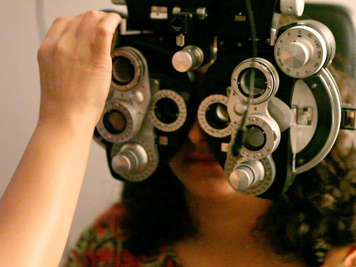
Binocular vision
Binocular vision is seeing with both eyes. The licensed eye care professional makes sure that, up close and at a distance, the eyes are aligned and there is no eye turn.

Pupil response
Pupil response is tested with a moving light in front of the eyes. The pupils (the black circle in the centre of the iris) should get smaller when they are exposed to light and get larger when the light is removed.
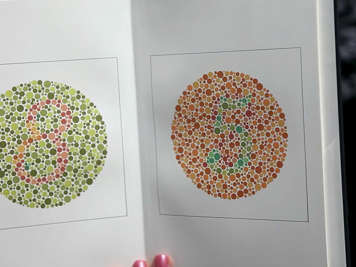
Colour blindness
Colour blindness is the inability to distinguish between colours in normal light conditions. Colour blindness can be as extreme as seeing only in black and white (very uncommon) or it could just mean being unable to distinguish different shades of colours (for example different reds). To test colour vision, your child will look at a chart with drawings, letters or numbers represented only with colours.
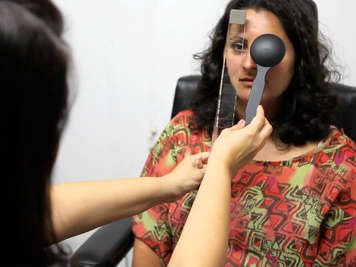
Eye turn and extraocular motility
Eye turn (or strabismus) is when the eyes are not aligned. The eyes can be turning in ("crossed") or turning out ("wall eye") or one can be higher than the other. A prism bar measures the angle of an eye turn.
Extraocular motility is your child's ability to move their eyes in different directions.
Eye convergence
Eye convergence (or eye crossing) is the inward movement of both eyes toward each other. The licensed eye care professional holds a stick in front of your child and asks them to follow it with their eyes. By moving the stick closer to your child’s face, your child’s eyes move inward toward each other to maintain focus on the stick. This is an important skill that is required for reading. When reading, the eyes converge for long periods of time. Reading for 20 minutes is going to be uncomfortable for your child if their eyes do not move towards each other properly. As a result, your child may avoid reading.
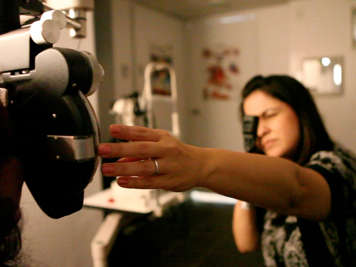
Retinoscopy
Retinoscopy is a light test to see if your child needs corrective glasses (or prescription lenses). With an adult, the licensed eye care professional tests different lenses and asks the patient whether they can see well. It is difficult for a child, as they cannot understand what “seeing better or worse” means.
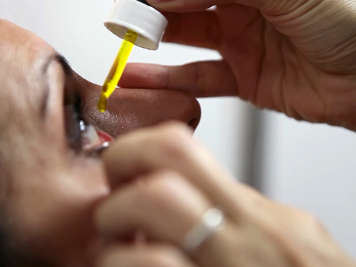
Focusing ability
To test focusing ability, the licensed eye care professional may put two drops of a drug in each eye to dilate the pupil. This prevents accommodation, the ability to see an object clearly at different distances. The eye drops mean that your child cannot see up close clearly. Putting the drops in does not hurt and their effect will wear off in a few hours. It may take six to eight hours to recover the focusing ability. Pupils can stay dilated for up to 24 hours.
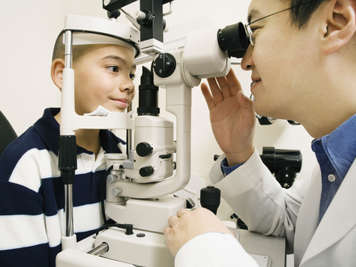
Dilated fundus
Dilated fundus examination checks the retina at the rear of the eye and makes sure it is healthy. Your child places their chin on the device and rests their forehead against it. The device is moved around your child’s head to allow the licensed eye care professional to see the entire retina.
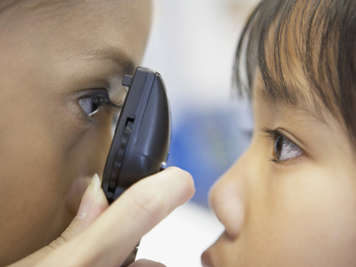
If your child is uncomfortable around such an intimidating device, the licensed eye care professional may use a smaller device instead.
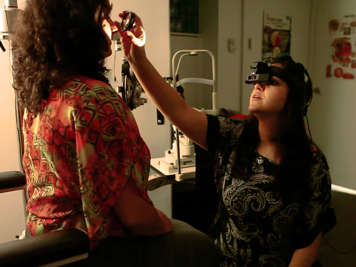
General eye health
The licensed eye care professional looks at the cornea, lens and blood vessels to make sure that each part of your child’s eye is healthy. They use different objects such as a portable lens and even wears special glasses to perform this check.
Eye examinations for children aged under two
Different tests are used to check an infant’s visual acuity. These tests are used to assess your child’s eye and vision development.
“Preferential looking” tests for vision problems in children aged under two. For example, a licensed eye care professional may use a board with a small hole in the middle to look at the child without the child seeing them and being distracted. The board has two halves: one is a grey square, the other has black and white stripes. The licensed eye care professional will want to check if the child looks at the stripes, as this is what babies will normally choose to do.
The infant's visual acuity is tested as the stripes become smaller and closer together and look more like the grey side.
If a problem is suspected, further tests will be carried out, and your child might be given prescription lenses or referred to a paediatric ophthalmologist. A paediatric ophthalmologist is a doctor specialized in eye conditions in children.
Remember that, when children are born, they do not have perfect vision (20/20). It takes some time to get there.
When booking an appointment, make sure to tell the licensed eye care professional your child’s age so they can prepare the appropriate tests and material.
How to choose glasses for your child
Ask your optician to help you find glasses that will fit your child properly. Involve your child in the process if they are old enough to understand. Remember, they are your child’s glasses not yours. If your child does not like the glasses, they are not going to wear them. Instead your child may hide or break the glasses or do whatever they can to not wear them.
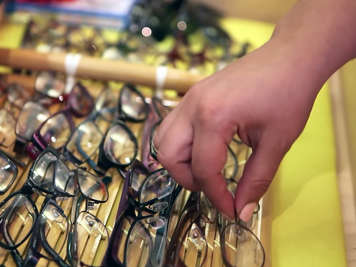
Help your child prepare for their eye examination
To help you be ready for your child's visit to the licensed eye care professional, you and your child can watch this video together.
References
Canadian Ophthalmological Society. Your Ophthalmologist & The Vision Care Team. Retrieved May 23, 2014.
Canadian Paediatric Society. Vision screening in infants, children and youth (2014, February 1)
Retrieved May 23, 2014, from: https://www.cps.ca/en/documents/position/children-vision-screening
